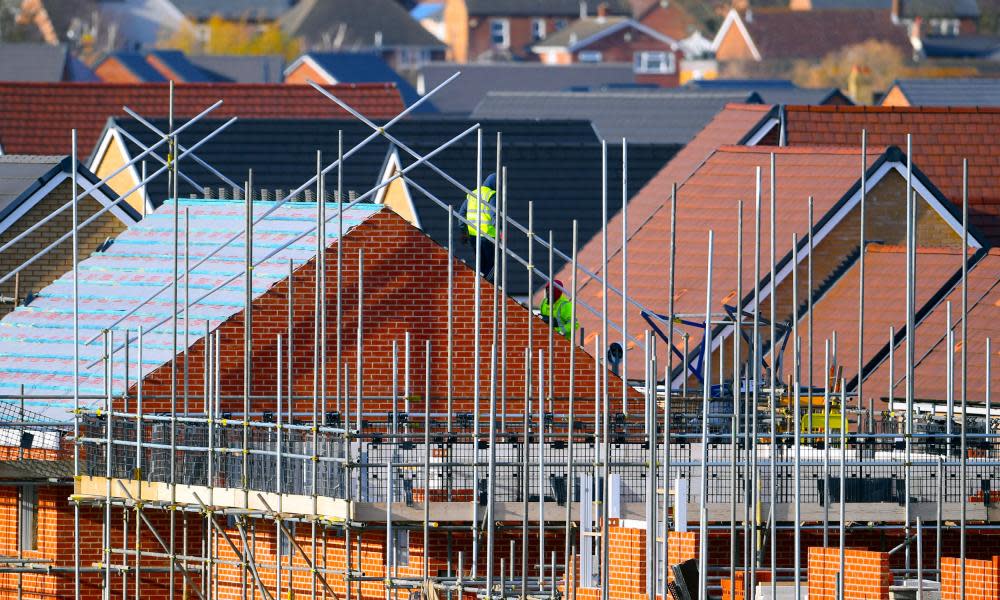Proposed changes to regulations 'will make buildings less energy efficient'

Proposed changes to building regulations in England and Wales are likely to make buildings less energy efficient not more, a group of leading architects and engineers has warned.
In a damning assessment of proposals to reform Part L of the Building Regulations, which sets the minimum energy performance standards for new dwellings, a growing coalition of professionals has described the changes as “a step backwards, in a climate where we need a huge leap forward”.
“The proposals are framed as an improvement, but they actually represent a reduction in the energy performance standards of buildings,” says Clara Bagenal George, a building services engineer at Elementa Consulting and founder of the London Energy Transformation Initiative (Leti), a voluntary group of more than 1,000 architects and engineers that has been calling for radical changes to how building energy consumption is assessed.
Under current regulations, all new building designs are assessed against a “notional” benchmark design, using parameters such as the thermal performance of materials, the orientation and size of the windows, airtightness and heating and ventilation systems (pdf). The proposed building must meet the performance of the notional design to pass the test.
Critically, the new changes to the regulations would remove something called the Fabric Energy Efficiency Standard, meaning a building designed next year could be allowed to perform much worse than one built in 2013, when the current standards were introduced. Similarly, a building that would fail to meet the current regulations would pass under the new system. Part L applies to all buildings, although the current consultation covers only dwellings.
Secondly, Leti warns that a proposed emphasis on overall carbon footprint will help to mask the actual energy performance of new homes. The government intends to introduce a new factor into the assessment, related to the energy efficiency of the grid, not the building itself. Because the National Grid has been rapidly decarbonising over the last few years, as more renewables have been connected, the new method of assessment would show that a home produced lower carbon emissions than before – despite the design being exactly the same.
“The new proposals totally mask the actual energy efficiency of a home,” says Clare Murray, head of sustainability at architecture firm Levitt Bernstein and member of Leti. “They make the building look like it is performing better, when the reality is it could be much worse.”
At a time when the built environment accounts for 40% of UK carbon emissions, a growing number of architects, engineers, planners and developers are demanding urgent change to the regulations to insist on more stringent energy standards. The proposed reforms of Part L are a missed opportunity to properly address the climate emergency, they say.
“It’s a massive disappointment,” says Joe Giddings, co-founder of the Architects Climate Action Network (Acan), a campaign group formed last year to address the twin crises of climate and ecological breakdown. “From disregarding the performance of a building’s fabric to ignoring the embodied energy of materials, the proposals represent a total loosening of regulations. And it’s all hidden in a dense consultation document that seems designed to confuse.”
Both Leti and Acan have also criticised proposals to remove local authorities’ existing powers to insist on greater energy efficiency than the national building regulations demand. Around 65% of local authorities have declared a climate emergency, and many have already introduced more stringent energy standards into the planning process, but all this would be overwritten by the new lower national regulations.
“Not only are the building regulations going backwards,” says Murray, “but local authorities won’t be able to set their own rules appropriate to their areas. It will roll the whole country backwards.”
Leti wants to see a fundamental shift towards monitoring how buildings actually perform in use, away from the current system of simply measuring abstract design factors in a vacuum, before the dwelling is built. Their research has shown that many buildings don’t come anywhere near meeting their purported Energy Performance Certificate (EPC) band, the official rating of a property’s energy efficiency. Equally, the way the rating system calculates heat loss and gain means it can’t detect factors such as more insulation and better airtightness, so good buildings end up being rated lower than they should be.
“The current system is simply not fit for purpose,” says Bagenal George. “It’s the wrong set of tools, as it was never designed to achieve net zero carbon.” The UK has a legal commitment to achieve net zero carbon by 2050, but Leti believes the new building regulations will knock it hopelessly off course. It is urging people to respond to the consultation on Part L by the 7 February deadline. On Monday, it will launch its own 150-page Climate Emergency Design Guide, along with an equally hefty Embodied Carbon Primer, which it hopes will provide practical solutions for architects, clients and local authorities to achieve a zero-carbon future.
“At the moment, our regulations simply aim for a ‘percentage better than bad’,” says Bagenal George. “We want to redefine what ‘good’ looks like and set out how we can get there.”

 Yahoo News
Yahoo News 
